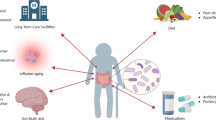Abstract
There is extensive evidence for influence of gut microbiota on health. Exclusive enteral nutrition (EEN) possibly changes gut microbiota, but the exact pathophysiological role is unknown. EEN has been shown to have an anti-inflammatory effect in children with Mb Crohn, an inflammatory bowel disease. The intestinal tract is very scarcely studied in children with juvenile idiopathic arthritis (JIA), but data points to an immunologically important role. The aim of this study was to explore if EEN had any anti-inflammatory effect in children with JIA. The first patient enrolled in the study was followed for 1 year. She had onset of severe polyarticular disease at 3.2 years of age, negative in RF, anti-CCP, ANA, and HLA-B27. She was included in the study at 7.4 years of age. Exclusive enteral nutrition was given in two periods of almost 7 weeks each, several months apart, during the year of the study. Clinical and laboratory status were assessed before, during, and after treatment periods. In this patient, EEN had remarkable anti-inflammatory effect that was sustained for months after each of two separate treatment periods. Exclusive enteral nutrition is a possible anti-inflammatory treatment in patients with JIA, but to what extent EEN is effective in other children with JIA needs to be explored, as well as the possible pathophysiological role of EEN in those children.

Similar content being viewed by others
References
Cua DJ, Sherlock JP (2011) Autoimmunity’s collateral damage: gut microbiota strikes ‘back’. Nat Med 17(9):1055–1056
Jacques P et al (2012) Pathophysiology and role of the gastrointestinal system in spondyloarthritides. Rheum Dis Clin N Am 38(3):569–582
Petty RE et al (2004) International League of Associations for Rheumatology classification of juvenile idiopathic arthritis: second revision, Edmonton, 2001. J Rheumatol 31(2):390–392
Stoll ML, Punaro M, Patel AS (2011) Fecal calprotectin in children with the enthesitis-related arthritis subtype of juvenile idiopathic arthritis. J Rheumatol 38(10):2274–2275
Lionetti P et al (2000) Evidence of subclinical intestinal inflammation by 99 m technetium leukocyte scintigraphy in patients with HLA-B27 positive juvenile onset active spondyloarthropathy. J Rheumatol 27(6):1538–1541
Kokkonen J et al (2007) Intestinal immune activation in juvenile idiopathic arthritis and connective tissue disease. Scand J Rheumatol 36(5):386–389
Zachos M, Tondeur M, Griffiths AM (2007) Enteral nutritional therapy for induction of remission in Crohn’s disease. Cochrane Database Syst Rev 1:CD000542
Gale SC et al (2012) Continuous enteral and parenteral feeding each reduces heart rate variability but differentially influences monocyte gene expression in humans. Shock 38(3):255–261
Gerasimidis K et al (2012) Impact of exclusive enteral nutrition on body composition and circulating micronutrients in plasma and erythrocytes of children with active Crohn’s disease. Inflamm Bowel Dis 18(9):1672–1681
Leach ST et al (2008) Sustained modulation of intestinal bacteria by exclusive enteral nutrition used to treat children with Crohn’s disease. Aliment Pharmacol Ther 28(6):724–733
Whitten KE et al (2012) International survey of enteral nutrition protocols used in children with Crohn’s disease. J Dig Dis 13(2):107–112
Giannini EH, Ruperto N, Ravelli A, Lovell DJ, Felson T, Martini A (1997) Preliminary definition of improvement in juvenile arthritis. Arthritis Rheum 40(7):1202–1209
Consolaro A et al (2011) Development and initial validation of composite parent- and child-centered disease assessment indices for juvenile idiopathic arthritis. Arthritis Care Res (Hoboken) 63(9):1262–1270
Singh G et al (1994) Measurement of health status in children with juvenile rheumatoid arthritis. Arthritis Rheum 37(12):1761–1769
Acknowledgments
The author is grateful to Professor Kjell Alving for constructive help with the figures, Professor Yigael Finkel and Dr. Niklas Nyström for their support and advice regarding pediatric gastroenterology, and Dr. Ingemar Swenne for constructive criticism. This work was supported by grants from the Department of Women’s and Children’s Health, Uppsala University Hospital, Uppsala, and the Gillbergska Foundation, Uppsala.
Disclosure
The author has declared no conflicts of interest.
Author information
Authors and Affiliations
Corresponding author
Rights and permissions
About this article
Cite this article
Berntson, L. Anti-inflammatory effect by exclusive enteral nutrition (EEN) in a patient with juvenile idiopathic arthritis (JIA): brief report. Clin Rheumatol 33, 1173–1175 (2014). https://doi.org/10.1007/s10067-014-2672-5
Received:
Accepted:
Published:
Issue Date:
DOI: https://doi.org/10.1007/s10067-014-2672-5




